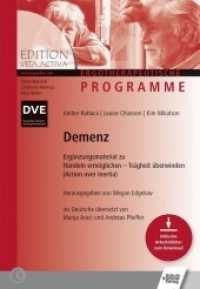Full Description
GEOFF NORMAN McMaster University, Hamilton, Canada CEES VAN DER VLEUTEN University of Maastricht, Netherlands DA VID NEWBLE University of Sheffield, England The International Handbook of Research in Medical Education is a review of current research findings and contemporary issues in health sciences education.








